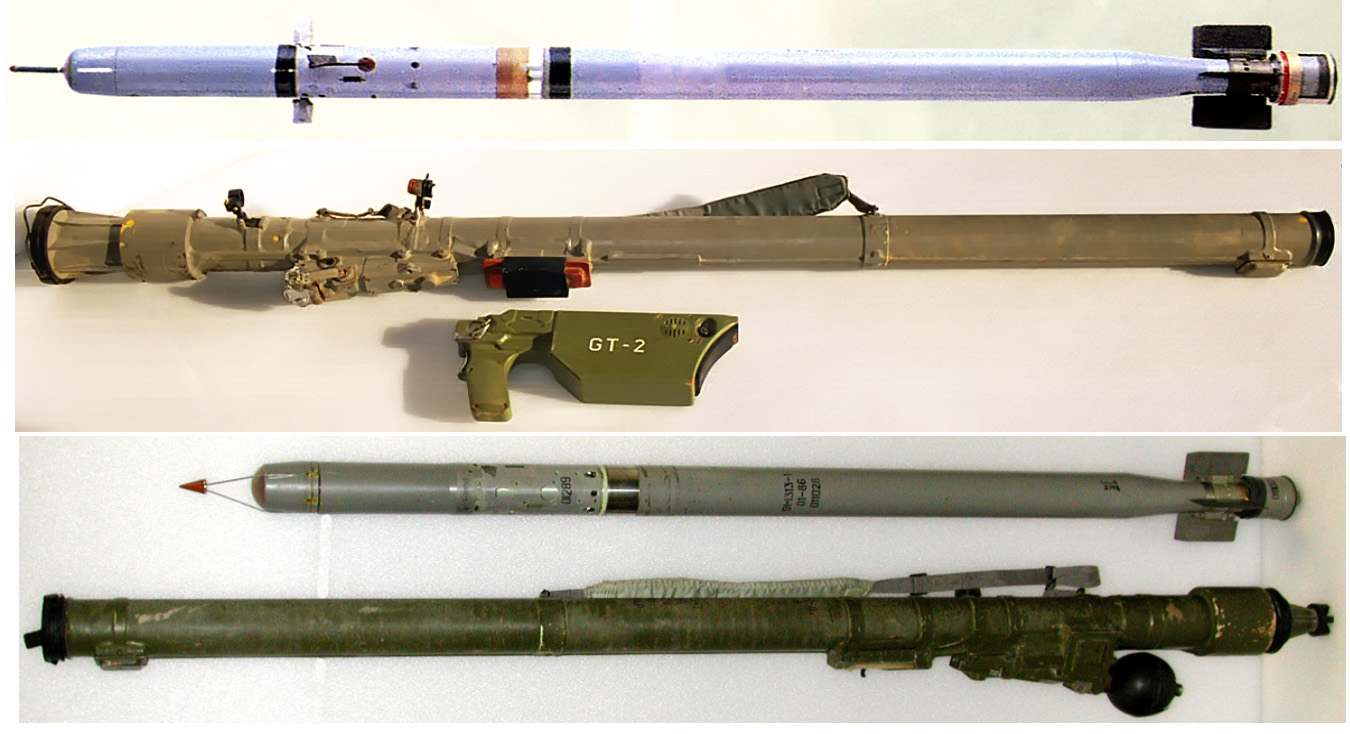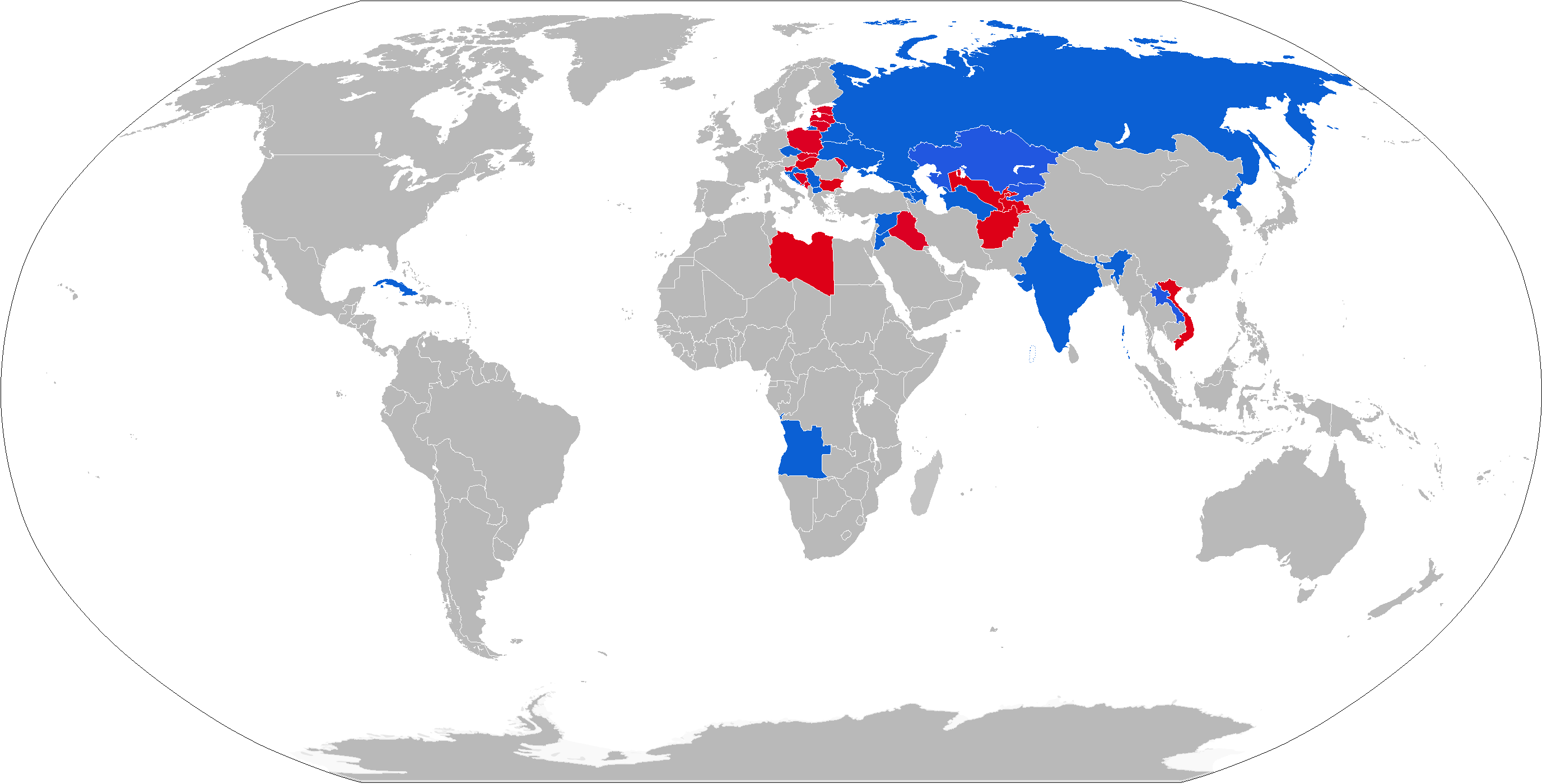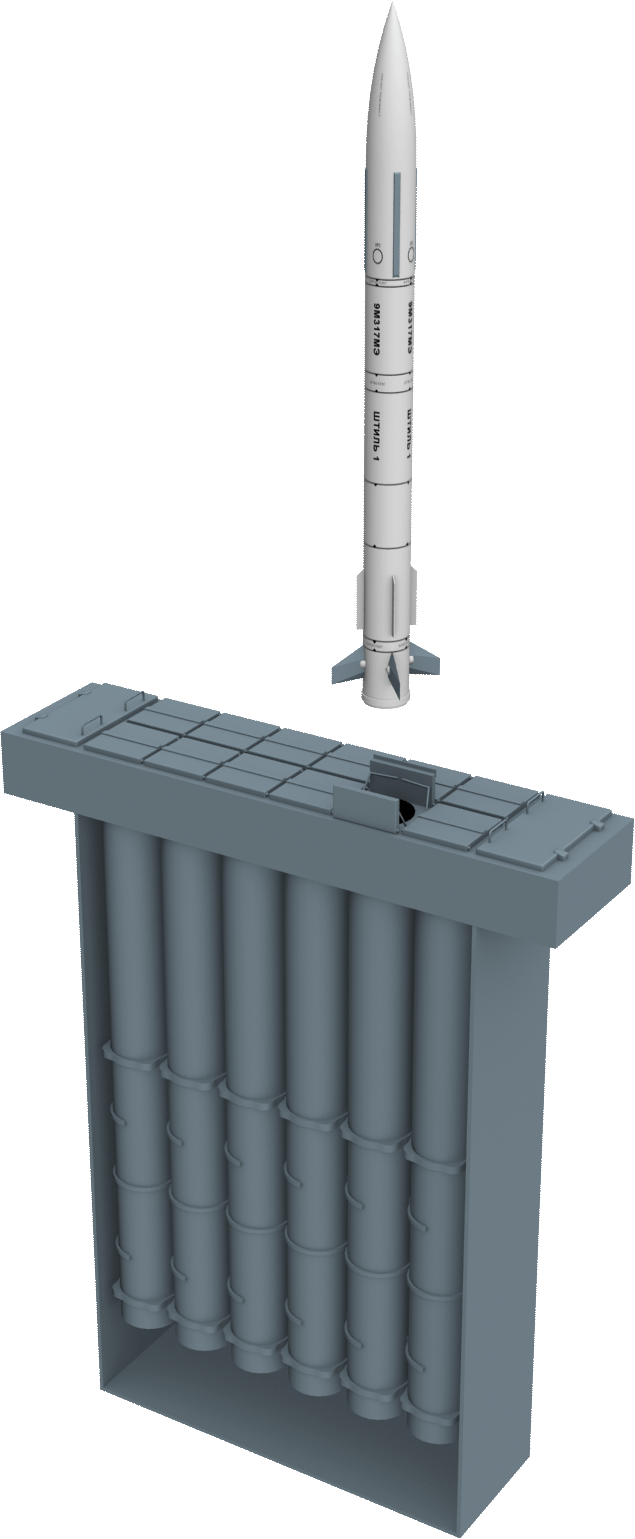|
List Of NATO Reporting Names For Surface-to-air Missiles
NATO reporting name for SA series surface-to-air missiles, with Soviet designations: * SA-1 "Guild" (S-25 ''Berkut'') * SA-2 "Guideline" (S-75 ''Dvina''/''Volkhov''/''Desna'') * SA-3 "Goa" (S-125 ''Nyeva'') * SA-4 " Ganef" (9M8 ''Krug'') * SA-5 " Gammon" (S-200 ''Volga'') * SA-6 " Gainful" (2K12 ''Kub''/''Kvadrat'') * SA-7 "Galosh" and "Grail" (9K32 ''Strela-2'') * SA-8 "Gecko" (9K33 ''Osa'') * SA-9 "Gaskin" (9K31 ''Strela-1'') * SA-10 " Grumble" (S-300P/PS/PT) * SA-11 " Gadfly" (9K37 ''Buk'') * SA-12 " Gladiator/Giant" (S-300V) * SA-13 "Gopher" (9K35 ''Strela-10'') * SA-14 "Gremlin" (9K36 ''Strela-3'') * SA-15 " Gauntlet" (9K330/9K331/9K332 ''Tor'') * SA-16 " Gimlet" (9K310 ''Igla-1'') * SA-17 "Grizzly" (9K37 ''Buk-M1-2'') * SA-18 "Grouse" (9K38 ''Igla'') * SA-19 "Grison" (2K22 ''Tunguska'') * SA-20 "Gargoyle" (S-300PM/PMU ''Favorit'') * SA-21 " Growler" (S-400 ''Triumf'') * SA-22 "Greyhound" (Pantsir-S1) * SA-23 " Gladiator/Giant" (S-300VM "Antey-2500") * SA-24 "Grin ... [...More Info...] [...Related Items...] OR: [Wikipedia] [Google] [Baidu] |
NATO Reporting Name
NATO reporting names are code names for military equipment from Russia, China, and historically, the Eastern Bloc (Soviet Union and other nations of the Warsaw Pact). They provide unambiguous and easily understood English words in a uniform manner in place of the original designations, which either may have been unknown to the Western world at the time or easily confused codes. For example, the Russian bomber jet Tupolev Tu-160 is simply called "Blackjack". NATO maintains lists of the names. The assignment of the names for the Russian and Chinese aircraft was once managed by the five-nation Air Standardization Coordinating Committee (ASCC), but that is no longer the case. American variations The United States Department of Defense (DOD) expands on the NATO reporting names in some cases. NATO refers to surface-to-air missile systems mounted on ships or submarines with the same names as the corresponding land-based systems, but the US DoD assigns a different series of numbers with ... [...More Info...] [...Related Items...] OR: [Wikipedia] [Google] [Baidu] |
SA-9 Gaskin
The 9K31 ''Strela-1'' (russian: 9К31 «Стрела-1»; en, arrow) is a highly mobile, short-range, low altitude infra-red guided surface-to-air missile system. Originally developed by the Soviet Union under the GRAU designation 9K31, it is commonly known by its NATO reporting name, SA-9 "Gaskin". The system consists of a BRDM-2 amphibious vehicle, mounting two pairs of ready-to-fire 9M31 missiles. Development history The missiles used in this system were developed alongside the ubiquitous Soviet MANPADS 9K32M "Strela-2" (NATO designation SA-7 "Grail") in the 1960s. At first, both missiles were intended to be man-portable systems, but as it became obvious that the Strela-2 would be far more compact, the development goals of Strela-1 were changed. Instead of a battalion-level man-portable system the new criteria called for a regimental vehicle-mounted SAM to support the ZSU-23-4. As a result of the change in role and more relaxed weight limits of a vehicle-mounted SAM, the de ... [...More Info...] [...Related Items...] OR: [Wikipedia] [Google] [Baidu] |
9K38 Igla
The 9K38 Igla (russian: Игла́, "needle", NATO reporting name SA-18 Grouse) is a Russian/Soviet man-portable infrared homing surface-to-air missile (SAM) system. A simplified, earlier version is known as the 9K310 Igla-1 (NATO: SA-16 Gimlet), and the latest variant is the 9K338 Igla-S (SA-24 Grinch). The Igla-1 entered service in 1981, the Igla in 1983, and the Igla-S in 2004. The Igla has been supplemented by the 9K333 Verba since 2014.New Russian Verba MANPADS will replace Igla-S - Armyrecognition.com, 15 September 2014 History The development of the Igla short-range man-portable air defense system ( MA ...[...More Info...] [...Related Items...] OR: [Wikipedia] [Google] [Baidu] |
SA-18 Grouse
The 9K38 Igla (russian: Игла́, "needle", NATO reporting name SA-18 Grouse) is a Russian/Soviet man-portable infrared homing surface-to-air missile (SAM) system. A simplified, earlier version is known as the 9K310 Igla-1 (NATO: SA-16 Gimlet), and the latest variant is the 9K338 Igla-S (SA-24 Grinch). The Igla-1 entered service in 1981, the Igla in 1983, and the Igla-S in 2004. The Igla has been supplemented by the 9K333 Verba since 2014.New Russian Verba MANPADS will replace Igla-S - Armyrecognition.com, 15 September 2014 History The development of the Igla short-range man-portable air defense system ( |
SA-17 Grizzly
The Buk (russian: link=no, "Бук"; "beech" (tree), ) is a family of self-propelled, medium-range surface-to-air missile systems developed by the Soviet Union and its successor state, the Russian Federation, and designed to counter cruise missiles, smart bombs, fixed- and rotary-wing aircraft, and unmanned aerial vehicles. The Buk missile system is the successor to the NIIP/Vympel 2K12 Kub (NATO reporting name SA-6 "Gainful"). The first version of Buk adopted into service carried the GRAU designation 9K37 Buk and was identified in the west with the NATO reporting name "Gadfly" as well as the US Department of Defense (DoD) designation SA-11. With the integration of a new missile the Buk-M1-2 and Buk-M2 systems also received a new NATO reporting name Grizzly and a new DoD designation SA-17. Since 2013, the latest incarnation "Buk-M3" is currently in production and active service with a new DoD designation SA-27. A naval version of the system, designed by MNIIRE Altair (curre ... [...More Info...] [...Related Items...] OR: [Wikipedia] [Google] [Baidu] |
SA-16 Gimlet
The 9K38 Igla (russian: Игла́, "needle", NATO reporting name SA-18 Grouse) is a Russian/Soviet man-portable infrared homing surface-to-air missile (SAM) system. A simplified, earlier version is known as the 9K310 Igla-1 (NATO: SA-16 Gimlet), and the latest variant is the 9K338 Igla-S (SA-24 Grinch). The Igla-1 entered service in 1981, the Igla in 1983, and the Igla-S in 2004. The Igla has been supplemented by the 9K333 Verba since 2014.New Russian Verba MANPADS will replace Igla-S - Armyrecognition.com, 15 September 2014 History The development of the Igla short-range man-portable air defense system ( |
SA-15 Gauntlet
The Tor (russian: Тор; en, torus) is an all-weather, low- to medium-altitude, short-range surface-to-air missile system designed for destroying airplanes, helicopters, cruise missiles, unmanned aerial vehicles and short-range ballistic threats (anti-munitions). Originally developed by the Soviet Union under the GRAU designation 9K330 Tor, the system is commonly known by its NATO reporting name, SA-15 "Gauntlet". A navalized variant was developed under the name 3K95 "Kinzhal", also known as the SA-N-9 "Gauntlet". Tor was designed to shoot down guided weapons like the AGM-86 ALCM and BGM-34 day and night, in bad weather and jamming situations. Tor can detect targets while on the move. The vehicle must stop intermittently when firing, although trials have been conducted with the aim of eliminating this restriction. Development The development of the Tor missile system started on 4 February 1975, in response to the directives of the Central Committee of the CPSU. Initiated as ... [...More Info...] [...Related Items...] OR: [Wikipedia] [Google] [Baidu] |
SA-14 Gremlin
The 9K34 Strela-3 (russian: 9К34 «Стрела-3», 'arrow', NATO reporting name: SA-14 Gremlin) is a man-portable air defense missile system (MANPADS) developed in the Soviet Union as a response to the poor performance of the earlier 9K32 Strela-2 (SA-7 Grail) system. The missile was largely based on the earlier Strela 2, and thus development proceeded rapidly. The new weapon was accepted into service in the Soviet Army in January 1974. Description The most significant change over the Strela 2 was the introduction of an all-new infra-red homing seeker head. The new seeker worked on FM modulation (con-scan) principle, which is less vulnerable to jamming and decoy flares than the earlier AM (spin-scan) seekers, which were easily fooled by flares and even the most primitive infrared jammers. The new seeker also introduced detector element cooling in the form of a pressurized nitrogen bottle attached to the launcher. The effect of cooling was to expand the seeker's lead sulphi ... [...More Info...] [...Related Items...] OR: [Wikipedia] [Google] [Baidu] |
9K35 Strela-10
The 9K35 ''Strela-10'' (russian: 9К35 «Стрела-10»; en, arrow) is a Soviet highly mobile, short-range surface-to-air missile system. It is visually aimed, and utilizes optical/ infrared-guidance. The system is primarily intended to engage low-altitude threats, such as helicopters. "9K35" is its GRAU designation; its NATO reporting name is SA-13 "Gopher". Development The 9K35 is the successor of the 9K31 Strela-1 and can also use the Strela-1's missiles in place of the 9M37. Development of the 9K37 Strela-10SV system was initiated July 24, 1969. The decision to begin the development of a new non-all-weather system was taken despite the simultaneous development of an all-weather hybrid gun/missile system 9K22 "Tunguska" mainly as an economical measure. It was also seen as advantageous to have a system capable of fast reaction times and immunity to heavy radio-frequency jamming. Rather than being mounted on an amphibious but lightly armoured BRDM chassis like the 9K31, the ... [...More Info...] [...Related Items...] OR: [Wikipedia] [Google] [Baidu] |
SA-13 Gopher
The 9K35 ''Strela-10'' (russian: 9К35 «Стрела-10»; en, arrow) is a Soviet highly mobile, short-range surface-to-air missile system. It is visually aimed, and utilizes optical/ infrared-guidance. The system is primarily intended to engage low-altitude threats, such as helicopters. "9K35" is its GRAU designation; its NATO reporting name is SA-13 "Gopher". Development The 9K35 is the successor of the 9K31 Strela-1 and can also use the Strela-1's missiles in place of the 9M37. Development of the 9K37 Strela-10SV system was initiated July 24, 1969. The decision to begin the development of a new non-all-weather system was taken despite the simultaneous development of an all-weather hybrid gun/missile system 9K22 "Tunguska" mainly as an economical measure. It was also seen as advantageous to have a system capable of fast reaction times and immunity to heavy radio-frequency jamming. Rather than being mounted on an amphibious but lightly armoured BRDM chassis like the 9K31, the ... [...More Info...] [...Related Items...] OR: [Wikipedia] [Google] [Baidu] |
SA-12 Gladiator/Giant
The S-300 ( NATO reporting name SA-10 Grumble) is a series of long range surface-to-air missile systems developed and operated by the former Soviet Union, now fielded by the militaries of Russia and Ukraine as well as several other former Eastern Bloc countries. It was produced by NPO Almaz, based on the initial S-300P version. The S-300 system was developed to defend against air raids and cruise missiles for the Soviet Air Defence Forces. Subsequent variations were also developed to be able to intercept ballistic missiles. The S-300 system was first deployed by the Soviet Union in 1979, designed for the air defence of large industrial and administrative facilities, military bases and control of airspace against enemy strike aircraft. During the Russian invasion of Ukraine in 2022, military analysts have stated that Russia has modified a number of systems to perform surface-to-surface strikes. The system is fully automated, though manual observation and operation are also p ... [...More Info...] [...Related Items...] OR: [Wikipedia] [Google] [Baidu] |
9K37 Buk
The Buk (russian: link=no, "Бук"; "beech" (tree), ) is a family of self-propelled, medium-range surface-to-air missile systems developed by the Soviet Union and its successor state, the Russian Federation, and designed to counter cruise missiles, smart bombs, fixed- and rotary-wing aircraft, and unmanned aerial vehicles. The Buk missile system is the successor to the NIIP/Vympel 2K12 Kub (NATO reporting name SA-6 "Gainful"). The first version of Buk adopted into service carried the GRAU designation 9K37 Buk and was identified in the west with the NATO reporting name "Gadfly" as well as the US Department of Defense (DoD) designation SA-11. With the integration of a new missile the Buk-M1-2 and Buk-M2 systems also received a new NATO reporting name Grizzly and a new DoD designation SA-17. Since 2013, the latest incarnation "Buk-M3" is currently in production and active service with a new DoD designation SA-27. A naval version of the system, designed by MNIIRE Altair (curre ... [...More Info...] [...Related Items...] OR: [Wikipedia] [Google] [Baidu] |


.jpg)






